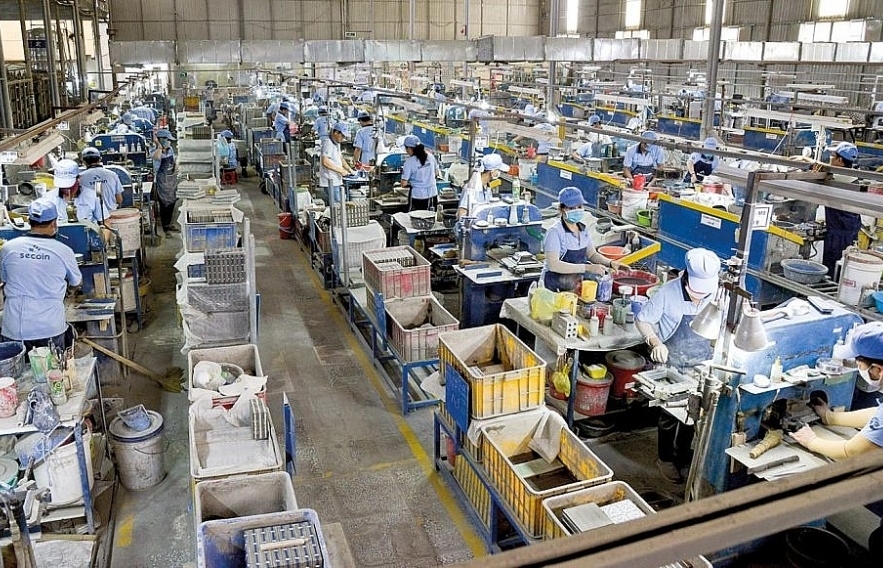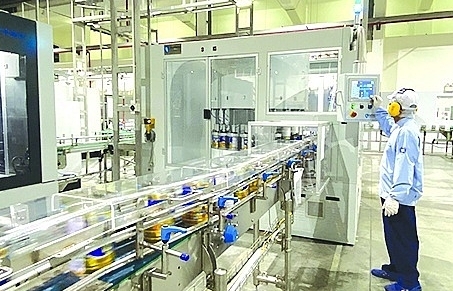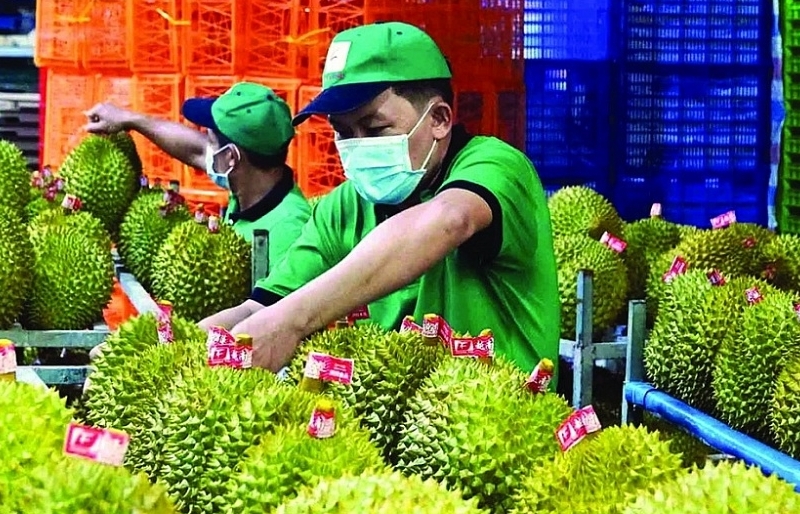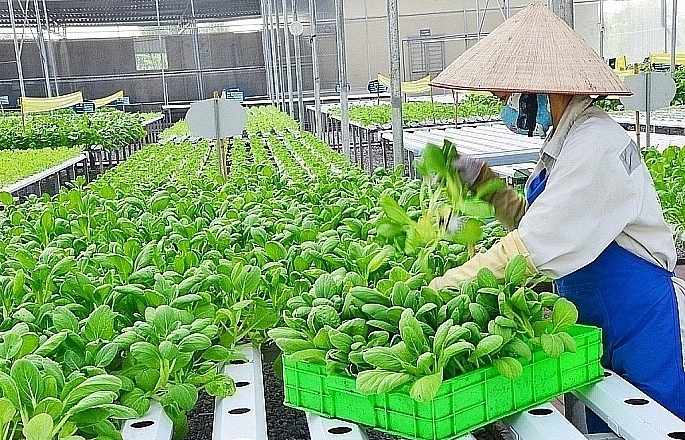Automotive industry: Need to avoid shortness of breath
 |
| In Vietnam, the trend of motorisation is expected to occur in the coming time, when GDP per capita exceeds 3,000 USD and the average number of cars per 1,000 people reaches 50 vehicles. |
Imported cars increased sharply
According to the latest statistics of the General Department of Customs, in September, the country imported 11,109 cars of all types, with a total value of more than US$250 million. In the first nine months of 2019, the country imported 107,034 complete cars (up 163 percent compared to the same period last year), with total turnover of nearly $2.4 billion (up 156 percent).
Further analysis shows the majority of imported cars are passenger cars of less than 9 seats (72.8 percent, an increase of 652 percent over the same period) and mainly cars from ASEAN countries (due to the 0 percent import tax), including especially Thailand and Indonesia.
Specifically, the number of cars imported from Thailand was 62,356 units (turnover of nearly $1.3 billion), accounting for more than 58.2 percent of the country's import volume (greatly increased compared to 39.4 percent in 2017); the amount of cars imported from Indonesia was 31,892 complete units (turnover of $445 million), accounting for nearly 30 percent of the country's import volume.
Thus, after import tax from ASEAN fell to 0 percent, cars imported from this market area increased sharply, currently accounting for 88.8 percent of total imported cars in the country.
In a recent report sent to the National Assembly, the Ministry of Industry and Trade said it expects the automobile trade deficit this year to reach a record of more than $3.4 billion. In the following years, car import turnover will continue to increase due to rising domestic demand, seriously affecting the domestic automobile industry and trade balance.
Efforts of domestic automobile production
With careful preparation and great determination, the past two years of domestic automobile production have also achieved remarkable results.
Latest data from the Ministry of Industry and Trade shows that in 2018, only two domestic enterprises, Hyundai Thanh Cong (TC Motor) and Truong Hai (Thaco), produced 144,960 vehicles (accounting for 45.7 percent of the total volume of vehicles, 58 percent of domestically produced vehicles). Hyundai Thanh Cong alone produced 61,460 units (an increase compared to 2017 of 28,383 units).
In the first nine months of 2019, domestic automobile production is estimated at more than 240,000 units, up 8.3 percent over the same period.
The correlation of output between domestically produced and imported vehicles has changed significantly, from 2.5 times (258,733/103,338) in 2017 to 3.72 times (250,081/67,148) in 2018 because in the first six months of 2019, it is only 1.74 times higher than the same period.
In addition to TC Motor and Thaco, other businesses such as Mercedes, Toyota, Ford, Honda, and Mitsubishi have also invested, increasing the number of domestically produced vehicles. Currently, some types of vehicles have achieved a relatively high level of NDT such as trucks up to 7 tonnes, reaching 55 percent, passenger cars with 24 seats or more, reaching 45-55 percent, leading to the opportunity that Vietnam has been able to export automotive products to markets such as Laos, Cambodia, Myanmar, and Central America.
In particular, in June 2019, VinFast car factory (Vingroup) inaugurated the first phase with a capacity of about 250,000 cars/year. With two newly launched products, for the first time, VinFast- the Vietnamese automobile brand officially appeared on the market which shocked not only Vietnam but also the world. In addition, Vinfast also builds auxiliary components factories for the automotive industry in the factory complex.
The pressure of fierce competition
Domestic production is under great pressure to compete with imported cars because of existing difficulties.
That is the current market size of Vietnam is too small, about 250,000 - 300,000 vehicles per year (the smalled among five countries with the automotive industry in ASEAN), by 1/7 compared to Thailand (about 2 million vehicles / year) and a fifth compared to Indonesia (about 1.3 million vehicles/year). With more than 40 automobile manufacturing and assembling enterprises having a total designed and installed capacity of about 680,000 vehicles/year, enterprises are producing very far below designed capacity.
While the percentage of Thai automobile owners from nine seats or less is from 60-80 percent, while Indonesia from 45-70 percent, Vietnam's major is just under 20 percent, there are a few samples reaching 37- 40 percent.
This leads to the cost of manufacturing and assembling cars in Vietnam being quite high. At the moment, Vietnam's car selling price is still high compared to other countries in the region (twice as much as Thailand and Indonesia), this figure is larger than other countries with a well-developed auto industry such as the United States and Japan.
Not to mention the quality of locally assembled vehicles has improved but not by imported cars. Therefore, despite efforts, it is difficult for businesses to compete with imported cars in the current period.
Support neededfast!
Finding solutions to support the development of the automotive industry is a unanimous decision of the Government, which requires ministries and agencies to research, propose and implement. However, in reality, the implementation is slow.
In a recent report to the National Assembly, the Ministry of Industry and Trade said the taxes and fees on automotive products are not reasonable and have not created favourable conditions for the majority of local people. Meanwhile, policies related to the industry have been issued slowly compared to other countries in the region. Besides, domestic policies are not stable and synchronised, so it has not created a breakthrough for the development of the industry.
Talking to reporters of the Customs Newspaper, Nguyen Duc Kien - Deputy Chairman of the National Assembly's Economic Committee said that cars are an important industry and an important driving force for the industrialisation - modernisation, should be encouraged and supported. However, according to Kien, "we have to change the supportive and encouraging thinking". That is, the State needs to come up with appropriate development policies, meeting the wishes of businesses. What the State needs to do is have a strategy to create a favourable and stable business environment for domestic automobile manufacturing enterprises; strategy to improve the competitiveness of the automotive components industry.
Pointing out the reasons for the stagnation of the automobile industry, the Ministry of Industry and Trade said as Vietnam's automobile market is too small, while the automobile industry has developed based on economies of scale; the number of enterprises manufacturing and assembling automobiles is too much compared to market size.
Three groups of supportive solutions were launched by this agency. That is, complete and simplify tax policies and procedures to create favorable conditions for automobile and supporting industry enterprises; adjust tax and budget regulations; special incentives for projects of manufacturing cars of less than nine seats with a scale of 50,000 cars/year or more and with export products.
Specific solutions are to promulgate new policies to focus on supporting to accelerate large projects on automobile manufacturing and assembly of large enterprises, attracting investment from multinational corporations and investing in large-scale projects with technology transfer and ownership in Vietnam.
Especially, the revised study does not levy special consumption tax on the value created in the country, with a term of 5-10 years. As well as amendment of tax policies, focusing on Special Consumption Tax, Corporate Income Tax and other government incentives and supports to attract investment projects to produce electric cars.
Le Ngoc Duc - General Director of TC Motor said one of the main reasons why Vietnam's automobile industry has not developed is due to the lack of support from policies for the automotive industry. Although from the end of 2017, the Government has issued two important Decrees (116 / 2-17 / ND-CP and 125/2017 / ND-CP) that have greatly affected the landscape of the auto market in 2018, but not enough to create a great advantage that also encourages domestic assemblers to invest and invest in products.
Last time, the company tried to maintain the output of all cars, but if it is prolonged, the health of the business will be weak, so it is necessary for the Government and ministries to have more synchronised measures in order to survive. "He said and expressed impatience when many recommendations on tax policy" survival "for the automotive industry but so far have not seen.
 | The growth of automotive industry boosts industrial real estate VCN- It is stated in the depth report and assessment on the positive impacts of the growth ... |
In the current trend of rapid and deep integration, the import tax of cars to 0 percent comes not only from ASEAN countries such as Thailand and Indonesia but also from member countries of the Comprehensive and Progressive Agreement for Trans-Pacific Partnership (CPTPP) and Vietnam - EU Free Trade (EVFTA) such as Japan, Canada, or Germany, Great Britain and France in the next 7-10 years. Not only that, the Vietnamese automobile industry is also subject to competition from the rapid development of latecomers in the region (such as Myanmar, Laos and Cambodia).
Without quick support or drastic measures, domestic production will struggle to continue developing and be strong enough to compete with the current wave of imported cars.
Related News

Storm No. 3 "knocks down" many small businesses
00:00 | 19/10/2024 Import-Export

Import and export potential growth promised to be vibrant in 6 end- year months, many industries welcome opportunities
09:30 | 15/10/2024 Import-Export

Need to quickly act to catch up with the "green" trend
10:59 | 12/10/2024 Import-Export

Risks for the economy when cash flow has not yet been put in to production and business
10:49 | 07/10/2024 Headlines
Latest News

Nghệ An Province anticipates record FDI amidst economic upswing
15:49 | 26/12/2024 Import-Export

Green farming development needs supportive policies to attract investors
15:46 | 26/12/2024 Import-Export

Vietnamese enterprises adapt to green logistics trend
15:43 | 26/12/2024 Import-Export

Paving the way for Vietnamese agricultural products in China
11:08 | 26/12/2024 Import-Export
More News

VN seafood export surpass 2024 goal of $10 billion
14:59 | 25/12/2024 Import-Export

Exporters urged to actively prepare for trade defence investigation risks when exporting to the UK
14:57 | 25/12/2024 Import-Export

Electronic imports exceed $100 billion
14:55 | 25/12/2024 Import-Export

Forestry exports set a record of $17.3 billion
14:49 | 25/12/2024 Import-Export

Hanoi: Maximum support for affiliating production and sustainable consumption of agricultural products
09:43 | 25/12/2024 Import-Export

Việt Nam boosts supporting industries with development programmes
13:56 | 24/12/2024 Import-Export

VN's wood industry sees chances and challenges from US new trade policies
13:54 | 24/12/2024 Import-Export

Vietnam's fruit, vegetable exports reach new milestone, topping 7 billion USD
13:49 | 24/12/2024 Import-Export

Aquatic exports hit 10 billion USD
13:45 | 24/12/2024 Import-Export
Your care

Nghệ An Province anticipates record FDI amidst economic upswing
15:49 | 26/12/2024 Import-Export

Green farming development needs supportive policies to attract investors
15:46 | 26/12/2024 Import-Export

Vietnamese enterprises adapt to green logistics trend
15:43 | 26/12/2024 Import-Export

Paving the way for Vietnamese agricultural products in China
11:08 | 26/12/2024 Import-Export

VN seafood export surpass 2024 goal of $10 billion
14:59 | 25/12/2024 Import-Export





